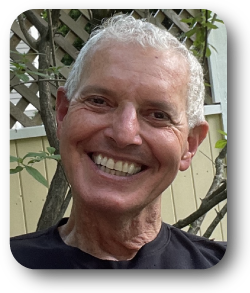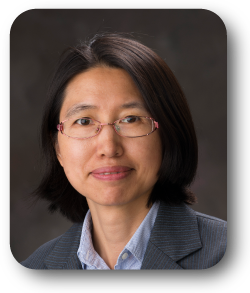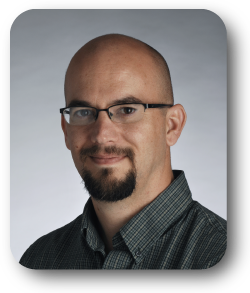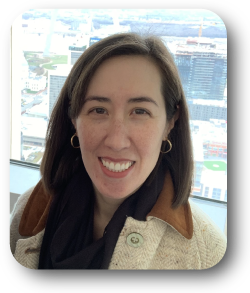
Dr. Tom Kirchhausen
I received my Ph.D. in Biophysics from the Instituto Venezolano de Investigaciones Cientificas and my post-doctoral training at Harvard where I am now Professor of Cell Biology and Pediatrics, and Senior Investigator at Boston Children’s Hospital. I love science, nice people, windsurfing and dancin
Seeing is believing; visual observations are a vital part of scientific studies. They are also key to the communication of science to the public and the participation of the public in the importance of scientific research and we use them to transmit knowledge and interpretation
Our work has been characterized by use of emerging technologies — from the early days of molecular cloning to contemporary high-resolution structural visualization and live-cell imaging. We started with the tools of x-ray crystallography, cryo electron microscopy, and single-molecule biophysics to create a “molecular movie” of clathrin-mediated endocytosis, and in this way related these molecular events to functional properties of the surfaces of living cells.
Direct observation of molecular events in vivo is a key goal of contemporary microscopy. Two recently developed forms of fluorescence microscopy available in our laboratory — Lattice Light Sheet Microscopy (LLSM) and Lattice Light Sheet Microscopy optimized with Adaptive Optics (AO-LLSM) — are poised to bridge the gap between molecules and cells, either as independent entities in culture, as components of organoids, or as components of living tissues. The richness and magnitude of the data over periods ranging from seconds to hours, create new challenges for obtaining quantitative representations of the observed dynamics and for deriving accurate and comprehensive models for the underlying mechanism
Our current research program includes development of the new kinds of visualization and analysis software required by the scale and complexity of the datasets, and use of LLSM and AO-LLSM to address problems in cell physiology and vertebrate development. We combine these frontier optical-imaging modalities with Artificial Intelligence Deep and Machine Learning methods to examine cellular membrane remodeling processes exemplified by cell size regulation and organization of the ER during cell division, post mitotic formation of nuclear pores complexes and organelle biogenesis, endosomal traffic, generation of intraluminal vesicles in endosomes, immune responsiveness, lipid homeostasis, cell-cell recognition, and the dynamics of SARS-CoV-2 virus-host cell interactions during early stages of infection
Learn more about Dr. Kirchhausen’s research at his website.

Dr. Limei Zhang
Limei Zhang was born and raised in China. After receiving a bachelor’s degree in Biochemistry from Jilin University in China, she moved to North America to pursue graduate studies. She acquired expertise in X-ray absorption spectroscopy from Prof. Graham N. George’s group at the University of Saskatchewan and in protein crystallography from Prof. Douglas C. Rees’ group at the California Institute of Technology. Zhang joined the Department of Biochemistry and Redox Biology Center at the University of Nebraska-Lincoln in 2015. The research in the Zhang group focuses on the metalloproteins involved in biotic and abiotic stress sensing or detoxification. Diverse tools will be utilized in the Zhang lab, including synchrotron-radiation-based X-ray diffraction, X-ray absorption spectroscopy, as well as biochemical techniques and computational modeling.
Learn more about Dr. Zhang’s research at her website.

Dr. Aron Fenton
Aron Fenton received his undergraduate degree in 1993 from the Department of Biochemistry and Molecular Biology Department at Oklahoma State University and stayed in the same department to earn a Doctor of Philosophy degree in 1999. For his postdoctoral research Dr. Fenton moved to the Department of Biochemistry and Biophysics at Texas A&M, where he worked in the Laboratory of Dr. Gregory Reinhart from 1999 till 2004. He established his own research group as Assistant Professor at the University of Kansas Medical Center in Kansas City. He rose through the academic ranks to become a full professor in 2017. In the following year, Dr. Fenton became both the Departmental Graduate Director and the Scientific Director of the KUMC Mass Spectrometry and Proteomics Core Laboratories. He became an adjunct member of the Pathology and Laboratory Medicine Department at KUMC in 2022.
During his career, Dr. Fenton has received multiple recognitions. In 2016, Dr. Fenton was part of team to be awarded the prestigious W.M. Keck Foundation Grant. In 2018, Dr. Fenton served as an Erskine Visiting Fellow at the University of Canterbury in Christchurch, New Zealand. That same year he also served as a guest speaker for a CECAM workshop focused on allosteric regulation in Lausanne, Switzerland.
Dr. Fenton’s research is primarily focused on protein mechanism that give rise to allosteric regulation based on rigorous thermodynamic definitions of what allosteric regulation is. Dr. Fenton has been instrumental in interpreting thermodynamic theories into practical applications. He has worked extensively to tailor such biophysical techniques as small angle X-ray scattering (SAXS), hydrogen/deuterium exchange as detected by mass spectrometry (H/DX-MS), NMR, and cryoEM and X-ray crystallography structural studies to correlate identify structural changes that are specifically correlated to allosteric regulation. He has also outlined step wise optimization of binding and allosteric properties in drug leads. He is the first to develop small molecule libraries assays, RNA aptamer and peptide aptamer screens that specifically identify allosteric effectors. More recently, Dr. Fenton has been developing a workflow to map how individual protein positions contribute to the allosteric outcome (the topic of the current presentation). This workflow will facilitate a side-by-side comparison of whether equivalent positions in two homologues contribute equivalently to the respective allosteric mechanisms.
Learn more about Dr. Fenton’s research at his website.

Dr. Daniel Herschlag
Professor Daniel Herschlag, Ph.D., is a Professor of Biochemistry and, by courtesy, of Chemical Engineering. The overarching goal of his research is to understand the fundamental behavior of RNA and proteins and, in turn, how these behaviors determine and impact biology more broadly. His lab takes an interdisciplinary approach, spanning and integrating physics, chemistry and biology, and employing a wide range of techniques.
Dan has been at Stanford for 30 years, following graduate work at Brandeis and postdoctoral work at the University of Colorado. He has identified new concepts in macromolecular folding, in RNA and protein catalysis, and in molecular evolution, and he has uncovered new principles of cellular RNA processing and organization. His research has been highly collaborative and multi-disciplinary. Dan has been recognized at Stanford and nationally for his mentoring, and is passionate about graduate education and postdoctoral training. Former trainees include faculty at research and teaching institutions, scientists in biotechnology, and individuals who have pursued creative career paths.
Learn more about Dr. Herschlag’s research at his website.

Dr. Janice Robertson
Janice L. Robertson obtained her Honours Bachelor of Science degree from the University of Toronto in Theoretical Physiology and Mathematics in 2002. She was first introduced to membrane proteins while studying in the laboratory of Dr. Peter Backx, where she carried out mathematical modeling of the cardiac action potential and conducted electrophysiological studies of voltage-gated sodium channels. She continued to study membrane permeation during her PhD, where she worked with Dr. Benoît Roux and Dr. Larry Palmer at the Weill Cornell Graduate School of Medical Sciences, carrying out computational studies aimed at investigating how changes in inward rectifier potassium channel sequence leads to changes in function. For her postdoctoral training, she switched disciplines and studied with Dr. Chris Miller at HHMI/Brandeis University, focusing on experimental membrane protein biochemistry while investigating the structure and function of anion transporters and channels. In 2011, she received a K99/R00 award from NIH/NIGMS, which enabled her to develop novel single-molecule fluorescence microscopy methods to study membrane protein assembly in membranes. In 2013, she started her independent research laboratory in the Department of Molecular Physiology and Biophysics at the University of Iowa, and in 2018 moved her laboratory to the Department of Biochemistry and Molecular Biophysics at Washington University in St. Louis. Her laboratory studies the fold, form and function of membrane proteins in membranes by integrating membrane protein biochemistry, single-molecule microscopy and computational modeling.
Learn more about Dr. Robertson’s research at her website.